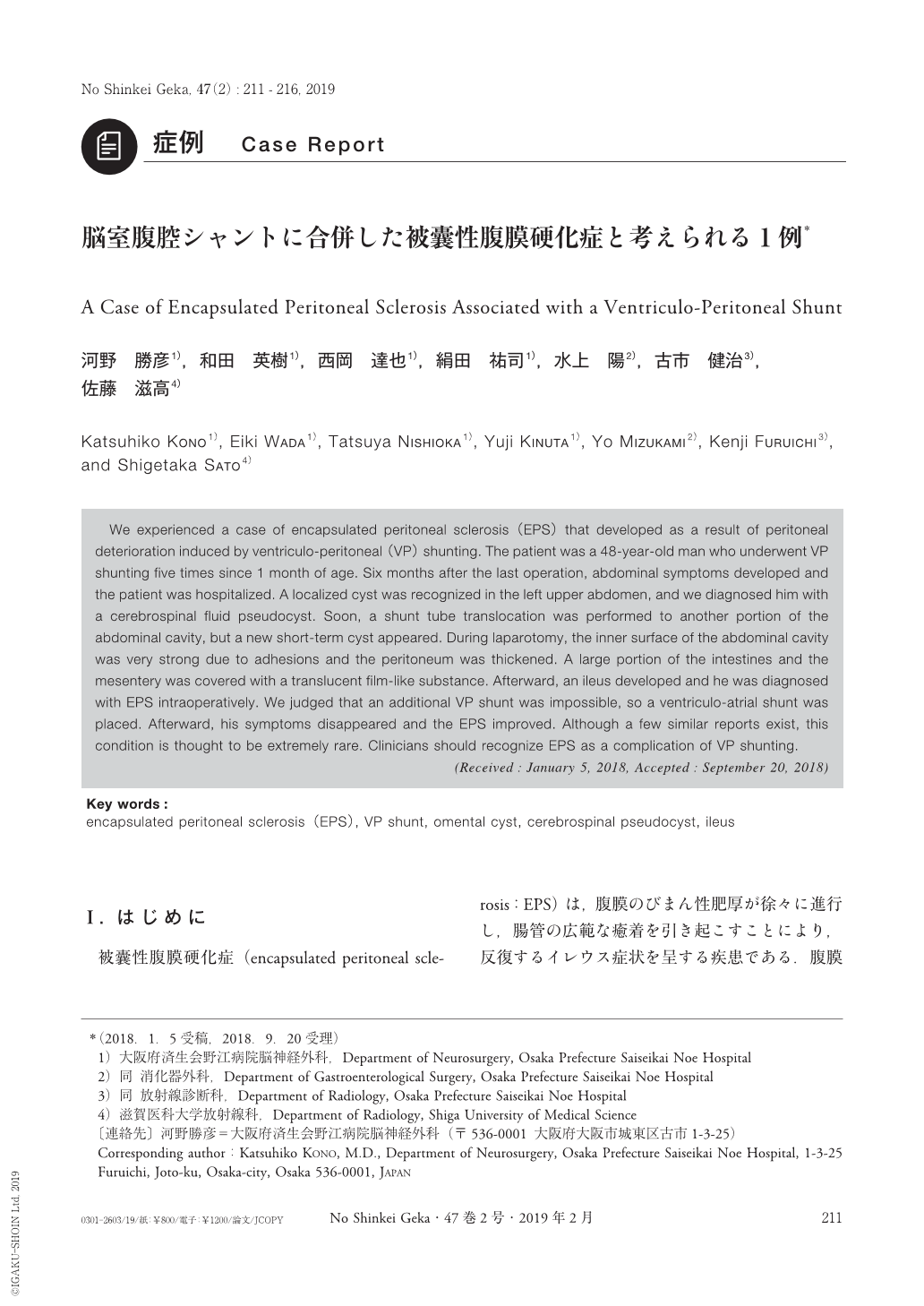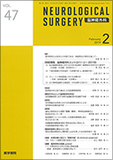Japanese
English
- 有料閲覧
- Abstract 文献概要
- 1ページ目 Look Inside
- 参考文献 Reference
Ⅰ.はじめに
被囊性腹膜硬化症(encapsulated peritoneal sclerosis:EPS)は,腹膜のびまん性肥厚が徐々に進行し,腸管の広範な癒着を引き起こすことにより,反復するイレウス症状を呈する疾患である.腹膜透析患者の最も困難な合併症としてよく知られており,治療抵抗性のものは生命予後も悪い6).今回われわれは,長期間の脳室腹腔(ventriculo-peritoneal:VP)シャントによってEPSを発症したと思われる症例を経験したので,若干の文献的考察とともに報告する.
We experienced a case of encapsulated peritoneal sclerosis(EPS)that developed as a result of peritoneal deterioration induced by ventriculo-peritoneal(VP)shunting. The patient was a 48-year-old man who underwent VP shunting five times since 1 month of age. Six months after the last operation, abdominal symptoms developed and the patient was hospitalized. A localized cyst was recognized in the left upper abdomen, and we diagnosed him with a cerebrospinal fluid pseudocyst. Soon, a shunt tube translocation was performed to another portion of the abdominal cavity, but a new short-term cyst appeared. During laparotomy, the inner surface of the abdominal cavity was very strong due to adhesions and the peritoneum was thickened. A large portion of the intestines and the mesentery was covered with a translucent film-like substance. Afterward, an ileus developed and he was diagnosed with EPS intraoperatively. We judged that an additional VP shunt was impossible, so a ventriculo-atrial shunt was placed. Afterward, his symptoms disappeared and the EPS improved. Although a few similar reports exist, this condition is thought to be extremely rare. Clinicians should recognize EPS as a complication of VP shunting.

Copyright © 2019, Igaku-Shoin Ltd. All rights reserved.


